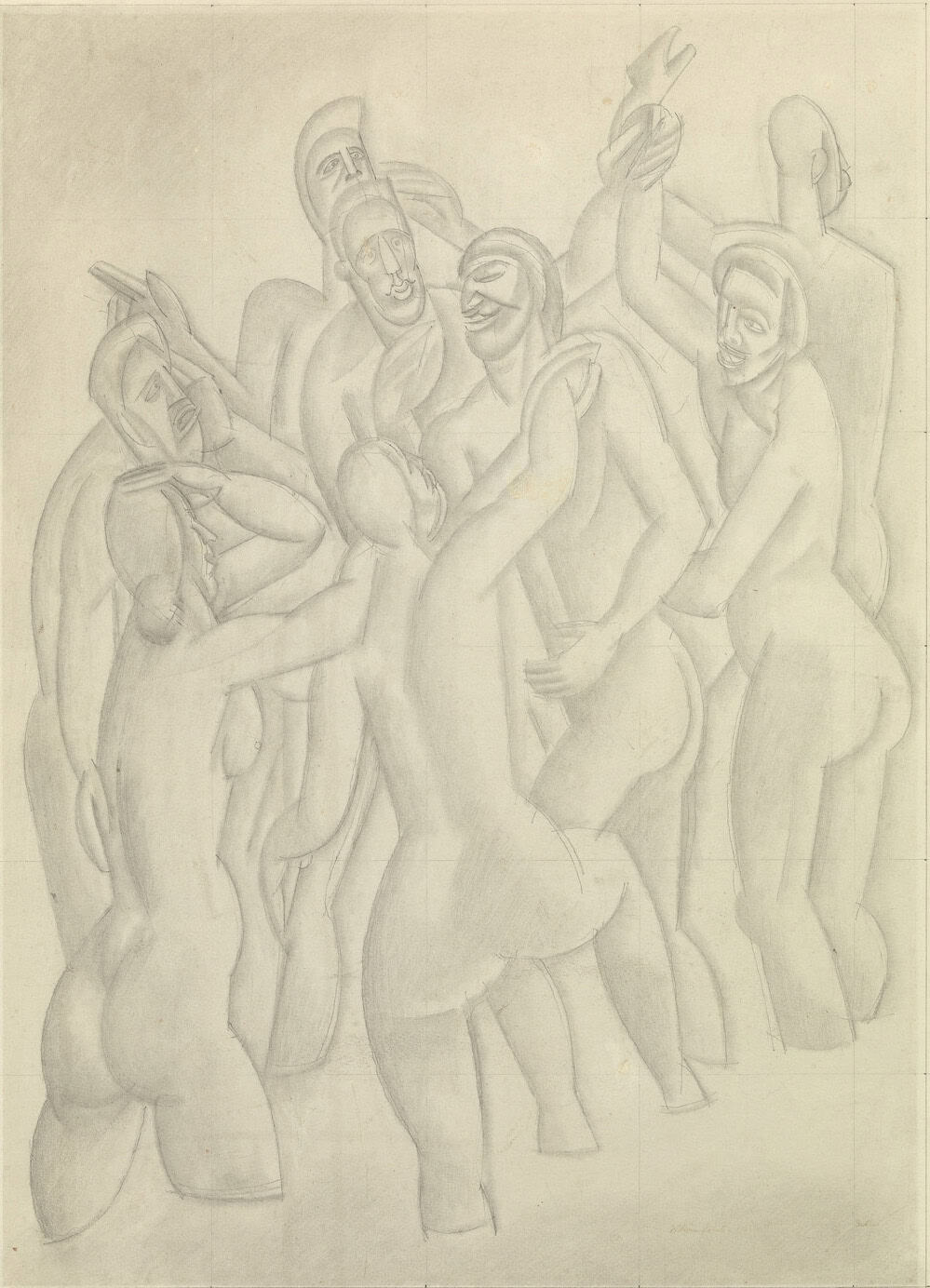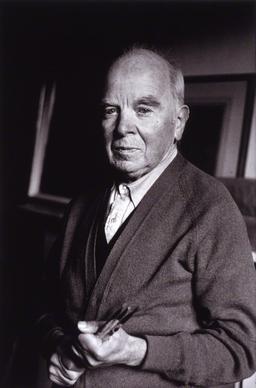
William Roberts
B. United States , 1984

B. United Kingdom1895-1980
Biography
Human figures pattern William Robert’s canvases, forming nexuses of overlapping lines and forms. The artist’s use of abstraction was pioneering among British artists before the Second World War. Roberts took influence from the Post-Impressionists and Cubism, and, in the 1910s, he joined a movement styled as the British alternative to the Italian Futurists, named the Vorticists. Roberts, however, referred to himself as an ‘English Cubist’. The complex compositions of angular lines and bright colouring attest to this self-determination. In the 1930s, his modelling took on a more rounded form, while his works maintained their frenetic linear format. Following the Second World War, Roberts modified his style to appeal to contemporary tastes by moving towards figuration. His large-scale, sensational works garnered much attention when they were exhibited at several Royal Academy of Art summer shows throughout the 1950s.
Roberts was born in 1895 in the East End of London. He studied at the Slade School of Art from 1911 to 1913, before joining Roger Fry’s milieu at Omega Workshops. Soon after, he fell in with Wyndham Lewis, creating the Vorticists, from which he later distanced himself. His first solo exhibition was in London, 1923. Several more solo exhibitions in London followed before two of his canvases were exhibited in Pittsburgh and New York in 1935. During the Second World War, Roberts was commissioned to make several paintings documenting life in Britain. The artist began to exhibit regularly at the Royal Academy of Arts following the War, and became an Associate of the Academy in 1958. In 1965, Tate staged a major retrospective of his work, and in the following year he was elected a full member of the Royal Academy. Roberts’ works are held in several major collections across the UK and Ireland, Canada, Australia, and New Zealand, including the National Portrait Gallery, London, Tate, London, British Museum, London, Imperial War Museum, London, Royal Academy of Arts, London, Victoria & Albert Museum, London, Whitworth Art Gallery, Manchester, Ashmolean Museum, Oxford, Fitzwilliam Museum, Cambridge, National Museum of Wales, Cardiff, Scottish National Gallery of Modern Art, Edinburgh, Art Gallery of South Australia, Adelaide, and the National Gallery of Canada, Ottawa. Arts Council England and the British Council also hold collections of the artist’s works. Roberts died in 1980.
By continuing to use this site you consent with our cookie policy. You can read more here.
Enquire
Thank you for your enquiry. We will be in touch shortly.